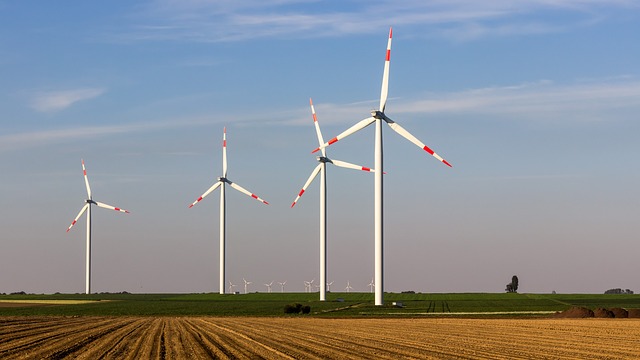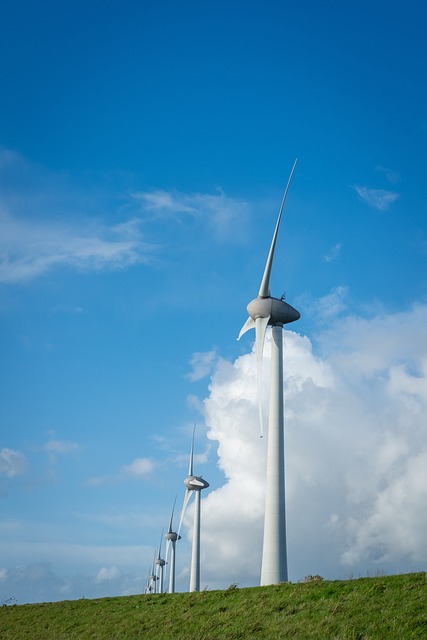Harnessing Nature: The Future of Renewable Power
As we stride deeper into the 21st century, our dependence on fossil fuels becomes an increasingly perilous path. Climate change, environmental degradation, and finite resources compel us to rethink our energy strategies. In response to these pressing challenges, renewable power emerges as not just an alternative but a necessity for securing a sustainable future. This article delves into the various facets of renewable energy, exploring its significance, current technologies, and future prospects.
The Urgent Need for Renewable Power
Climate change is perhaps the greatest existential threat of our era. With rising global temperatures, melting ice caps, and unpredictable weather patterns, the implications for biodiversity and human societies are profound. The burning of fossil fuels for energy contributes significantly to greenhouse gas emissions, making a transition to renewable power imperative.
Additionally, the depletion of fossil fuel reserves introduces concerns over energy security. The volatility of oil and gas prices, alongside geopolitical tensions, underscores the urgency of diversifying our energy portfolio. Renewable energy sources such as solar, wind, hydro, and geothermal power provide not only a cleaner alternative but also a pathway toward energy independence and stability.
Understanding Renewable Energy Sources
Renewable energy refers to energy collected from resources that are naturally replenished on a human timescale. Typically categorized into several key types, each source has its unique features, benefits, and challenges.
Solar Energy
Solar energy harnesses sunlight through photovoltaic cells or solar thermal systems. Solar panels convert sunlight directly into electricity, while solar thermal systems use sunlight to generate heat, which can then be transformed into electricity.
The advantages of solar energy are numerous. It’s abundant, inexhaustible, and widely available worldwide. As technology advances, the cost of solar panels has dropped significantly, making it more accessible to consumers and businesses alike. However, challenges such as energy storage, efficiency during cloudy days, and land use for large solar farms remain areas of ongoing research and innovation.
Wind Energy
Wind energy transforms kinetic energy from wind into electricity using turbines. Wind farms can be established on land or offshore, depending on regional wind patterns and space availability.
The benefits of wind energy include its low operational costs and minimal environmental impact once established. Technological advancements have led to larger, more efficient turbines capable of generating substantial electricity. However, wind energy is susceptible to variability, requiring complementary energy sources or advancements in storage technologies to ensure a consistent power supply.
Hydropower
Hydropower has long been a cornerstone of renewable energy, utilizing flowing water to generate electricity. Dams and run-of-the-river systems are common methods for capturing this energy.
Hydropower boasts advantages such as consistent energy production and the ability to store energy through reservoir management. However, the environmental impact on aquatic ecosystems, displacement of communities, and concerns over drought conditions are significant challenges associated with large-scale hydropower projects.
Geothermal Energy
Geothermal energy harnesses heat from beneath the Earth’s crust, tapping into natural reservoirs of steam and hot water. This clean energy source offers a reliable and consistent power supply and has a smaller land footprint compared to other renewables.
Nevertheless, geothermal energy is location-dependent, predominantly available in geothermal hotspots, which limits its widespread application. Technological improvements are essential to enhance geothermal energy’s accessibility and efficiency, particularly in regions where geothermal activity is not prominent.
Biomass Energy
Biomass energy utilizes organic materials, such as plant and animal waste, to generate electricity, heat, or biofuels. It presents a unique opportunity to recycle waste while providing a sustainable energy source.
However, there are concerns about food security, land use, and the carbon footprint of biomass production. Sustainable biomass practices need to be developed to ensure that it complements rather than competes with food production and biodiversity conservation efforts.
The Integration of Renewable Energy in Society
Transitioning to renewable energy requires more than just developing technological solutions; it necessitates a socio-political and economic framework that promotes its integration. This includes government policies, public-private partnerships, and community engagement.
Governments worldwide are beginning to recognize the importance of creating supportive policies that incentivize renewable energy deployment. Tax credits, subsidies, and grants can stimulate investments in green technologies. Furthermore, regulations and standards for energy efficiency can promote sustainable practices in industries and households.
Public awareness campaigns are essential in fostering a culture of sustainability. As communities become more informed about the benefits of renewable energy, they are more likely to advocate for change and actively participate in the transition process.
Challenges and Barriers
Despite the promising prospects of renewable energy, several challenges hinder its widespread adoption. Technological, financial, and infrastructural barriers must be navigated to realize a comprehensive shift toward sustainable energy practices.
Technologically, energy storage systems are one of the primary challenges for the integration of renewables. Solar and wind energy output is intermittent, often fluctuating based on weather conditions and time of day. Current storage solutions, such as batteries, still need to evolve to provide cost-effective, large-scale storage capabilities.
Financially, the initial investment required for renewable energy projects can be a deterrent. Although the long-term savings are substantial, stakeholders may hesitate to invest without guaranteed short-term returns. Innovative financing options and support from financial institutions can help bridge the gap, making renewables a viable option for more investors.
Infrastructural challenges are also significant. Energy grids across many regions are outdated and not equipped to handle the diverse and decentralized nature of renewable energy. Nevertheless, advancements in smart grid technologies and microgrid systems can pave the way for a more resilient and adaptive energy infrastructure, capable of integrating various renewable sources effectively.
The Role of Innovation and Research
Continued innovation is crucial in overcoming the challenges associated with renewable energy. Research and development (R&D) can lead to breakthroughs that improve efficiency, reduce costs, and enhance sustainability.
Investment in R&D across different sectors—solar, wind, energy storage, and grid technology—can catalyze new solutions and business models. Collaborations between governments, academia, and the private sector can accelerate the development of cutting-edge technologies, fostering an ecosystem of innovation.
Furthermore, analyzing and implementing best practices from countries leading in renewable energy initiatives can provide valuable insights for nations yet to fully embrace this transition. Policies that encourage knowledge sharing and technology transfer can create a global movement toward cleaner energy systems.
The Future Outlook for Renewable Power
The future of renewable power is bright and filled with possibilities. As technology advances, costs continue to decline, making renewables an increasingly attractive option compared to fossil fuels. According to recent studies, it is estimated that renewable energy could provide up to 80% of the world’s energy by 2050, if we can successfully implement innovative solutions, supportive policies, and public engagement.
Moreover, the environmental benefits of renewable energy are vast. Transitioning to cleaner sources of energy can drastically reduce greenhouse gas emissions, thereby mitigating climate change effects. This shift can also conserve precious natural resources, protect ecosystems, and improve public health by reducing air and water pollution.
Additionally, renewable energy presents opportunities for job creation. The growth of this sector can spur new industries and stimulate economies, providing clean energy jobs ranging from manufacturing to installation and maintenance. This transformation holds the potential to empower communities and foster a more equitable energy landscape.
Conclusion
Harnessing nature through renewable power is a vital pathway toward a sustainable future. By embracing technology, innovation, and collaborative efforts, we can address the pressing challenges posed by climate change and finite fossil fuel resources. As we move forward, the transition to renewable energy not only symbolizes hope for a cleaner planet but also a commitment to preserving our environment for generations to come. The time is now to invest in our planet’s future, building a renewable energy landscape that respects nature and its intrinsic value.



